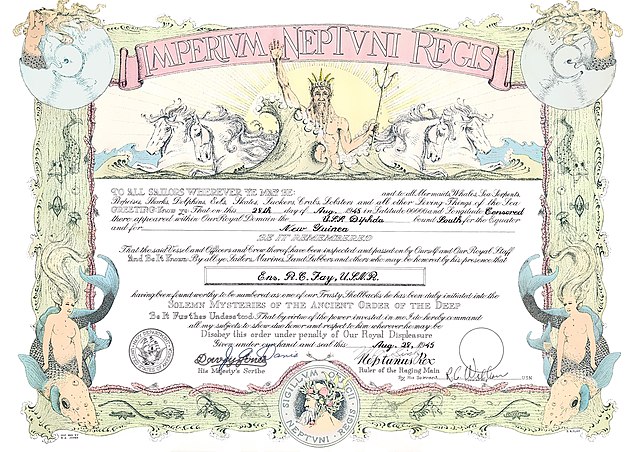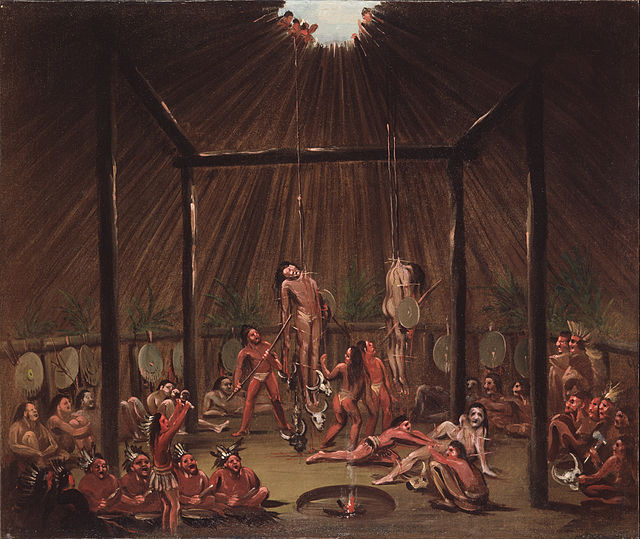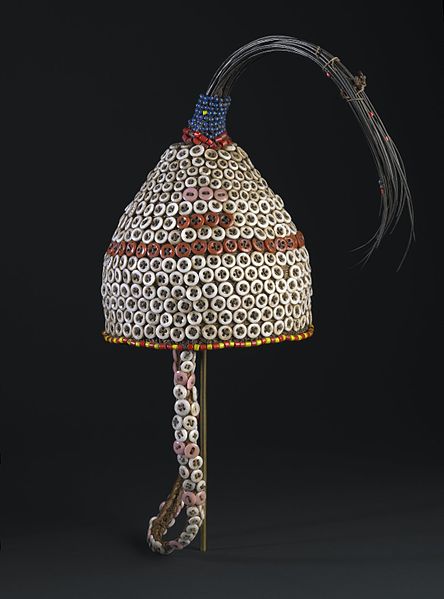The line-crossing ceremony is an initiation rite that commemorates a person's first crossing of the Equator. The tradition may have originated with ceremonies when passing headlands, and become a "folly" sanctioned as a boost to morale, or have been created as a test for seasoned sailors to ensure their new shipmates were capable of handling long, rough voyages. Equator-crossing ceremonies, typically featuring King Neptune, are common in the Navy and are also sometimes carried out for passengers' entertainment on civilian ocean liners and cruise ships. They are also performed in the merchant navy and aboard sail training ships.
Line-crossing ceremony aboard Méduse on the first of July 1816.
Shellback certificate awarded to Charles Cameron, aboard USS Utah, commemorating his first crossing of the Equator, December 1, 1928. This is typical of certificates awarded in the pre-World War II period.
Shellback certificate for Bob Fay aboard USS Diphda for crossing the Equator in the Pacific at the end of World War II, August 1945.
Crossing the equator ceremony (with "Davy Jones" with yellow cape and a plunger as sceptre) aboard USS Triton, 24 February 1960 as part of the Operation Sandblast cruise
Initiation is a rite of passage marking entrance or acceptance into a group or society. It could also be a formal admission to adulthood in a community or one of its formal components. In an extended sense, it can also signify a transformation in which the initiate is 'reborn' into a new role. Examples of initiation ceremonies might include Christian baptism or confirmation, Jewish bar or bat mitzvah, acceptance into a fraternal organization, secret society or religious order, or graduation from school or recruit training. A person taking the initiation ceremony in traditional rites, such as those depicted in these pictures, is called an initiate.
The Okipa ceremony was a test for young Mandan men to prove themselves as warriors. The ceremony as witnessed by George Catlin, circa 1835
Freemasonry initiation. 18th century
Equator crossing ceremony on Empress of Australia, August 1941
This hat would only have been worn by initiates to Kindi, the highest level of Bwami. Tail hair of an elephant, a metaphor for Kindi, crowns the hat. European-made buttons began to replace cowrie shells as prestige items on such Bwami paraphernalia as the Western presence grew in eastern Congo in the early twentieth century








